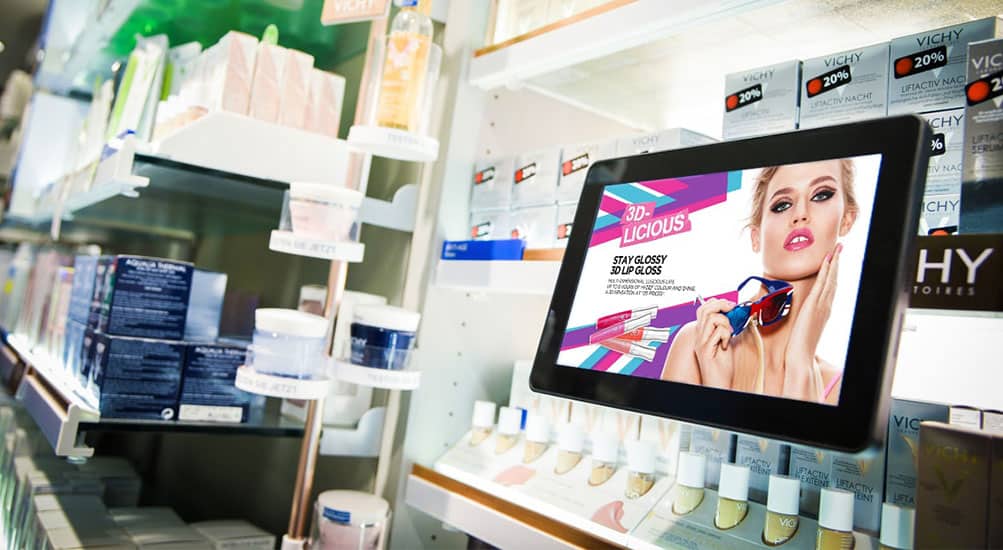
Digital Signage Guest Blog – A Case Study on the Effectiveness of Point of Sale Signage
Editor’s note: This is a guest blog by Stan Tan of Selby’s – Australia’s leading specialist manufacturer of event branding solutions and fabric displays.
With the rise of eCommerce and Amazon, offline retail sales is going through a rough time. Add China on top of that and it is a nightmare.
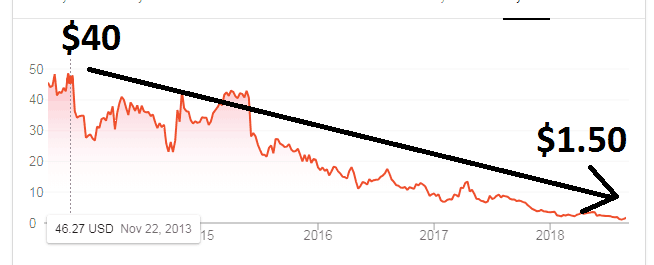
Sears stock was at $40+ per share. That number is down by over 90%!
In order to remain price competitive with eCommerce, retail stores are cutting down the number of sales staff per store.
However, the reduction of sales staff in stores comes at a cost – the cost of customer service and the cost of sales. Who is going to assist the customer when they need help at that moment when they are about to make a purchasing decision? Will they walk out the store empty handed because they weren’t sure about the product or will they walk out with a purchase?
That is where point of sale signage comes in. The POS signage is there to assist the customer by providing them with key information about the product
The next question is do point of sale signage work? Do customers actually pay attention to them and do the signage actually influence their decision to buy?
Case Study – Selling Light Bulbs using Point of Sale Signage
A study was conducted to analyse whether point of sale signage can increase the sales of light bulbs.
Three different signage message was tested. After consulting with industry experts, three messages were selected:
- Long-life
- Cost-savings
- Combination of both long-life and cost-savings

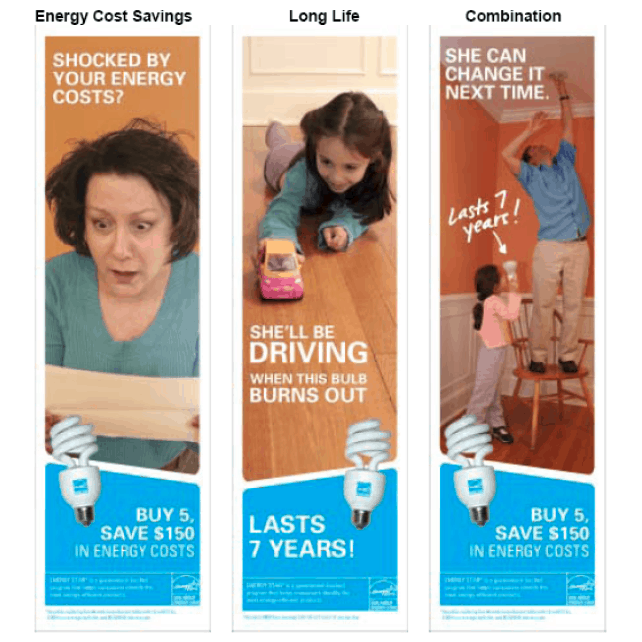
The test lasted for 3 weeks and deployed across 109 stores.
- 40 stores had the long-life message (message #1).
- 28 stores had the cost-savings message (message #2).
- 41 stores had the combination message (message #3).
- The remaining 36 stores had no signs.
The signs were also installed in the light bulb aisle to ensure as many shoppers as possible view the message.
Here were the results
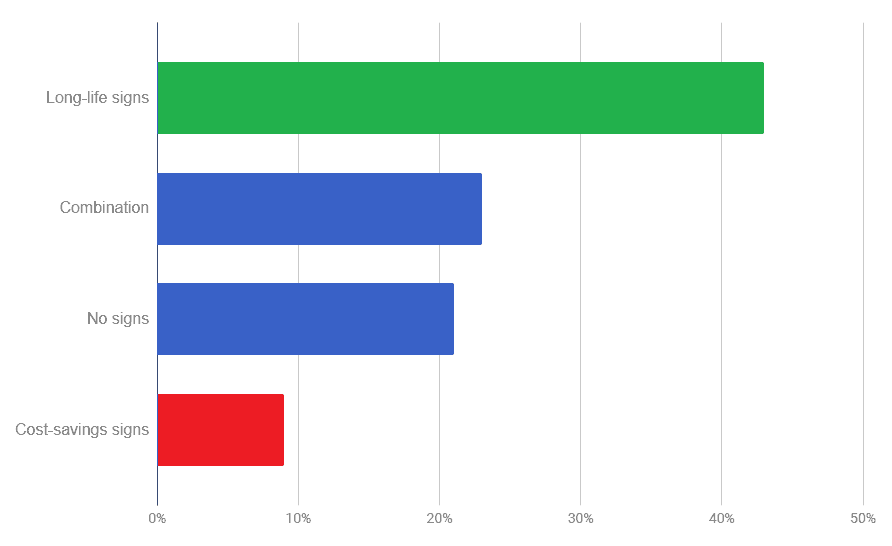
Stores with no signage had a sales increase of 20%. Hence that is the benchmark to beat.
The winning message was message #1 with the long-life message. Stores with this message had a 43% increase in sales. That is a 115% improvement compared to the control group!

Stores with the combination message had a 23% increase in sales which is 15% higher than the control group.
The worst performing signage was the cost-saving signage with only a 9% increase in sales.
Key takeaways
#1 – Point of sale signage do help in increasing sales.
#2 – The most important takeaway here is the message has to be right. If the message isn’t right, that would actually result in a slower increase in sales. Hence, researching the customers’ pain points and the reason why they are buying is critical to the success of a point of sale signage.
#3 – Another takeaway is one message per signage. The signage with combination didn’t result in any significant increase in sales vs the control group. There are other studies that have shown when multiple message is combined into a signage or advertisements, the results are generally lacklustre.
Improving the effectiveness of point of sale signage
The majority of point of sale signage today are static. They are printed onto rigid boards such as corflute, PVC or foam board.
The more modern POS signage are fabric frames. Tesla uses fabric frames in all their stores.
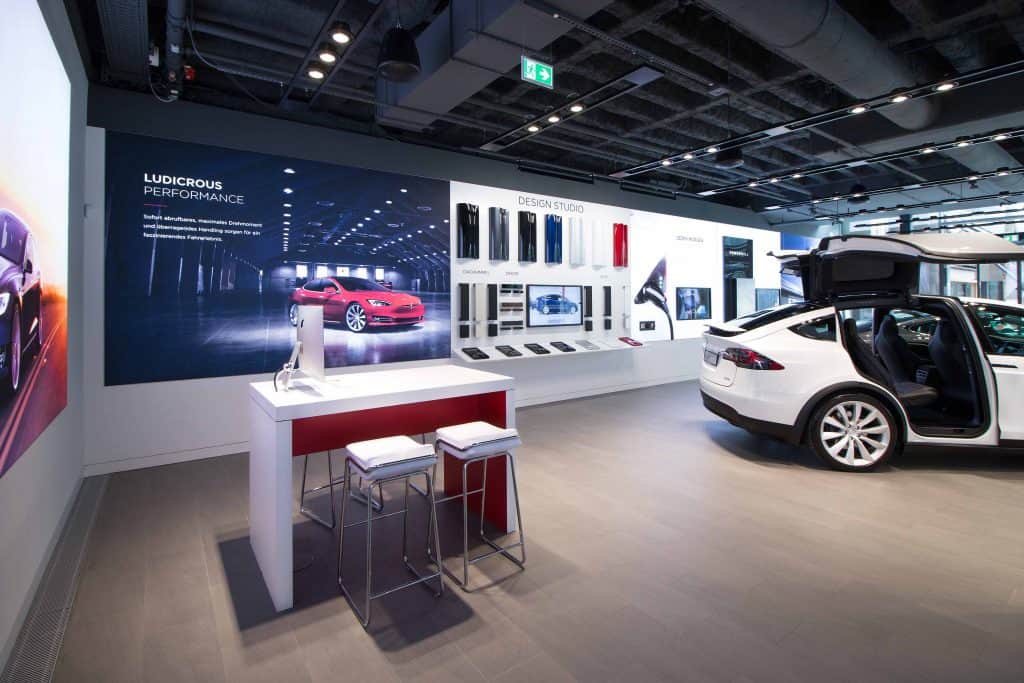
Even with Tesla using fabric frames, the future of point of sale signage is digital.
An increasing number of retail stores have been implementing this. Digital signage is a major shift in the POS signage industry.
One of the key reasons is because of the content and the process behind getting a POS signage from print to store.
Just to give you an example, that fabric frame in the Tesla store has to be:
- Designed by their marketing department.
- Ensure the design is compatible with the printing company’s artwork template.
- Schedule it for printing.
- You also have to hope the printing company has the experience to colour match to the exact colour of your design. For example, Coca-Cola’s red has to be that exact same Coca-Cola’s red.
- Fabric print gets printed.
- Aluminium frame gets manufactured.
- Organise logistic company to pick up and ship to client’s store. Tesla currently has over 110 stores in the USA alone. That isn’t including all their other stores worldwide.
- Lastly, organise an installer to install it in each store. So taking the example of 100 stores again, the installers have to go to each of the stores and physically install the frame.
Can you imagine the amount of work involved behind the scenes?
With digital signage, once the major components (displays, media players, etc.) are installed in store, the only major steps required is to get the graphic designed and push a button and it is live across all stores.
That is just one of the key advantages digital signage have over traditional signage. When it comes to point of sale, marketers have to adapt quickly to the constantly changing taste and demand of consumers.
NBA Finals coming up? If you are a beverage company, you want your ad creative to mention about NBA Finals with your beverage.
For example, “NBA Finals Countdown in 3 days! Do you have your beers ready?!”
You can’t wait for 1 week to go through the standard print process to get your POS signage up.
About the author
Stan Tan is the digital marketing manager at Selby’s, a signage company in Australia specialising in retail, point of sale, sporting events and trade shows. Their clients include the likes of McDonald’s and Mercedes-Benz.

Thomas Fraser-Bacon is the Marketing Director for Allsee Technologies. His background is in Digital Signage and Product Design.


